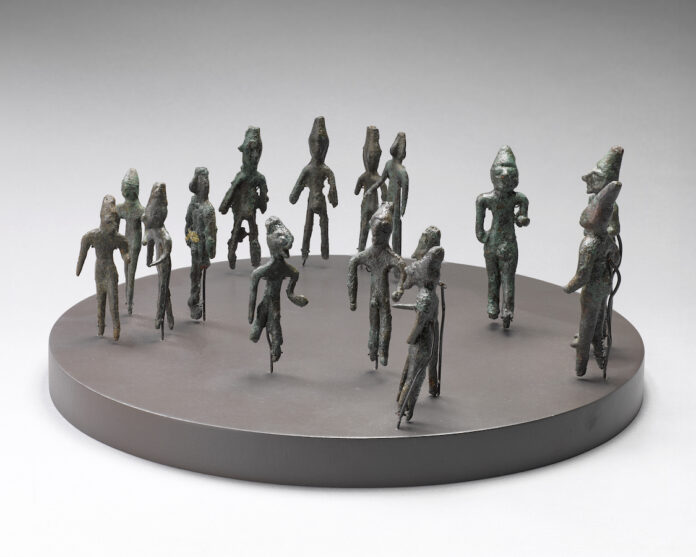PARIS: A new exhibition at Paris’ Louvre Museum illustrates the longstanding cultural relationship between France and Lebanon.
“Byblos et le Louvre,” which runs until Sept. 11, is a unique display of archaeological artifacts from the Lebanese seaport town of Byblos (also known as Jbeil), one of the world’s oldest continuously inhabited cities.
Visitors will find ceramic jars, small figurines, cuneiform tablets, and ancient weapons on display, some of which are thousands of years old. Despite their age, many of the items are in remarkably good condition.
Ensemble figurines votives, Byblos Mus?e du Louvre, Rapha?l Chipault. (Supplied)
“What is amazing is the pottery, which looks like it’s been made yesterday,” Tania Zaven, an archaeologist of Lebanon’s Directorate General of Antiquities, told Arab News.
For Louvre archaeologist Julien Chanteau, who was on site during recent excavations, Byblos is a hugely significant site with a lot of stories to tell.
“It’s a very small site, maybe six hectares. But you can read all the history of mankind there, from the Neolithic period until today,” Chanteau said. “Byblos is like a book.
Byblos et le Louvre. (Supplied)
“You have all cultures and civilizations: The Egyptians, the Canaanites, the Phoenicians, the Romans, the Greeks, and the Arabs have all left traces on this site,” he continued. “It’s very impressive for an archeologist to have such an amount of information. It’s like a chronicle of humanity.”
Under Napoleon III, the first French-led excavations in Byblos began in 1860, led by scholar Ernest Renan. He brought many objects back to France, and released detailed publications of the excavation.
Excavations have continued to the present day — although they were interrupted in the Seventies because of the Lebanese Civil War. In 2018, a scientific excavation program was relaunched, pairing archaeologists and experts from the Louvre Museum and the DGA. They have explored the area’s royal underground chambers, tombs, and temples.
Byblos et le Louvre. (Supplied)
Zaven noted some of the challenges of undertaking archeological missions in Lebanon, including security and looting. “Every day we are working against illicit trafficking,” she said. “We wanted to have this exhibition to show that Lebanon is still here. We believe in our culture and we want our culture to stay alive.”
In October, the exhibition will travel to a museum in the Dutch city of Leiden. It will also be exhibited, next spring, in an old house in Byblos, coming full circle.


